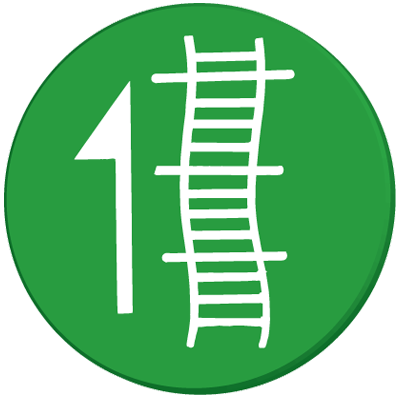SOP 4: Boarding
PROCEDURES
4.1 Risk assessment and occupational safety
Safe procedures to evacuate rescue teams boarding the Distressed Vessel (DV) should be confirmed in case of an unexpected emergency situation. Consultation with the master of the DV should be performed concerning possible escape ways and safe locations. Use the vessel’s safety plan if that is available. Standby boats should be arranged as ‘ready to launch’ for the evacuation of the rescue teams, passengers and the DV crew in case of an emergency evacuation.
The Search and Rescue Mission Coordinator (SMC) or On-scene Coordinator (OSC) should consult with experts to determine the needed Hazardous and Noxious Substances (HNS) protection procedures. At minimum, the rescue teams have to have clear information about the level of Personal Protective Equipment (PPE), possible extra protection, detection and measurement equipment, equipment for potentially explosive atmospheres (ATEX), and decontamination procedures. Depending on the risk assessment, in some situations the transport phase for the DV has to be performed with the highest PPE level which has to be taken into account when considering the possible boarding procedures. A proscription of wearing PPE during transport (e.g. chemical protective suits and Self Contained Breathing Apparatus (SCBA) in rescue crafts and helicopters) and a very short remaining working time after transport (due to consumption of breathing air and/ or physical exhaustion wearing PPE) may make boarding of the DV impossible.
Prior to boarding the DV, the participating units/teams should be informed about the action plan, their task, situation on board the distressed vessel, risk assessment, communication channel and circumstances (weather, restrictions, etc.). Basic procedure to approach the DV for boarding in the hazardous environment should contain at least the safest direction to approach (upwind, away from visible or detected gas), the use of detection and measurement devices, the appropriate PPE level and safety equipment (e.g. life vests) and communications.
After the briefing and before the practical execution, all rescue personnel should be registered. Additional documentation includes recording the entry and exit time to and from the warm zone, the consumption of breathing air, and the progress of the rescue operation. Contamination of the body, incorporation and injuries in general should be recorded as well.
4.2 Limitations
When assessing different possibilities for transportation, the following factors have an effect on the decision or can be exclusionary:
• Result of the HNS risk assessment
• Limitations on the use of the helicopter (distance to reach the DV, and/or using a helicopter is too dangerous or impossible due to a hazardous atmosphere around the DV)
• Weather impact that affects landing or winching from a helicopter and boarding from the rescue craft
• Capabilities of the SRUs in the area
The distressed vessel’s manoeuver capability and possibility to anchor should be confirmed from the master of the DV. The SMC and the master of the SRU should find out if there is a possibility to control the DV with external assistance (e.g. with emergency towing) if the DV maneuver capability of the DV is limited or if the vessel in distress is not under control.
4.3 Pre-boarding measures
Possible measures to enable safe boarding the DV should be considered and launched. Consult the master of the DV about the possibility to extinguish or cool down a possible fire or chemical reaction with water cannons and/or foam if the HNS risk assessment allows that. Prior to approaching the distressed vessel, also consider possible gas cloud control with water cannons or water jets to reduce the HNS impact and guide gas cloud and vapors, etc., away from the casualties and rescue teams. These protective measures can be done by both the DV and SRU firefighting (fi-fi) equipment when applicable.
To avoid ignition of the substance, use only devices and equipment that can be used in potentially explosive atmospheres (ATEX) and foam the area as a precaution and use foam monitors if necessary.
4.4 Boarding possibilities
The decision on boarding the distressed vessel should be done after discussions with the master of the DV. The master of the SRU should consult with members of the boarding, entry and backup teams on issues concerning occupational safety when planning the boarding procedures. Find out the safe boarding point for the rescue craft or the entering point for a winch operation, and confirm the following preparation operations on board the distressed vessel:
• Landing or winching procedures for the helicopter in situations where the use of a helicopter is possible • Boarding procedures for the rescue craft or tender (pilot hatch, gangway, ramps, etc.)
• Reception and guidance of the rescue personnel boarding the distressed vessel
• Assistance of the rescue personnel to establish an emergency decontamination station and first aid facilities on board, if possible
• Provision of supplementary SCBA, Emergency Escape Breathing Devices (EEBDs) or the equivalent for evacuating the casualties and as a supplementary air reserve for rescue teams.
In cases where the assistance of the DV crew is not available for boarding, consider alternative boarding measures. Options to be considered for the specific boarding team transported to the DV by the helicopter or tender:
• Preparing pilot hatch, gangway or pilot ladder
• Lowering the rescue boat from davits, or
• Preparing the rescue boat ladders, ramps, etc. for the rescue teams to arrive.
Depending on the risk assessment, one possibility is also manoeuvring the SRU alongside and using the crane with the rescue basket for transporting the rescue teams to the DV.
